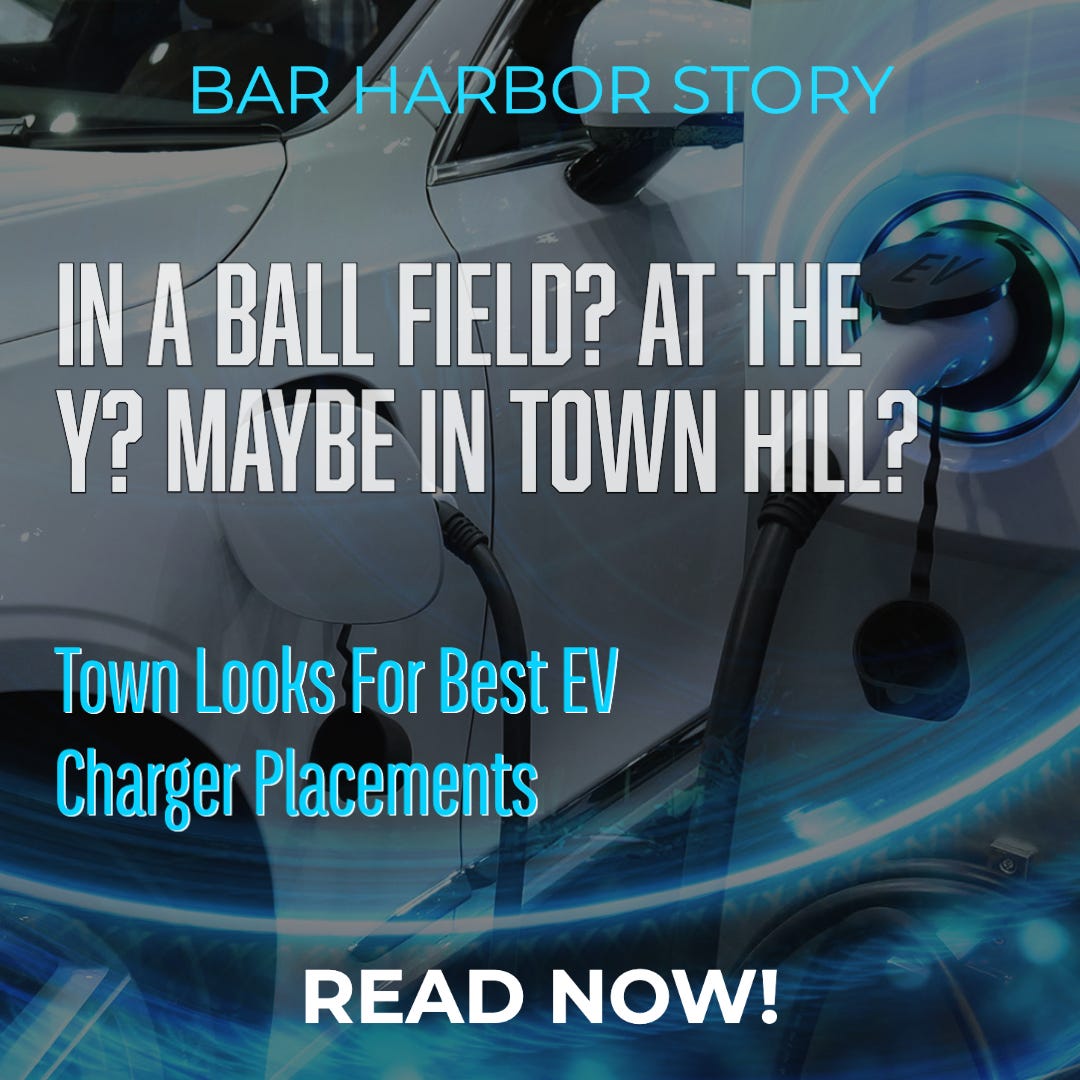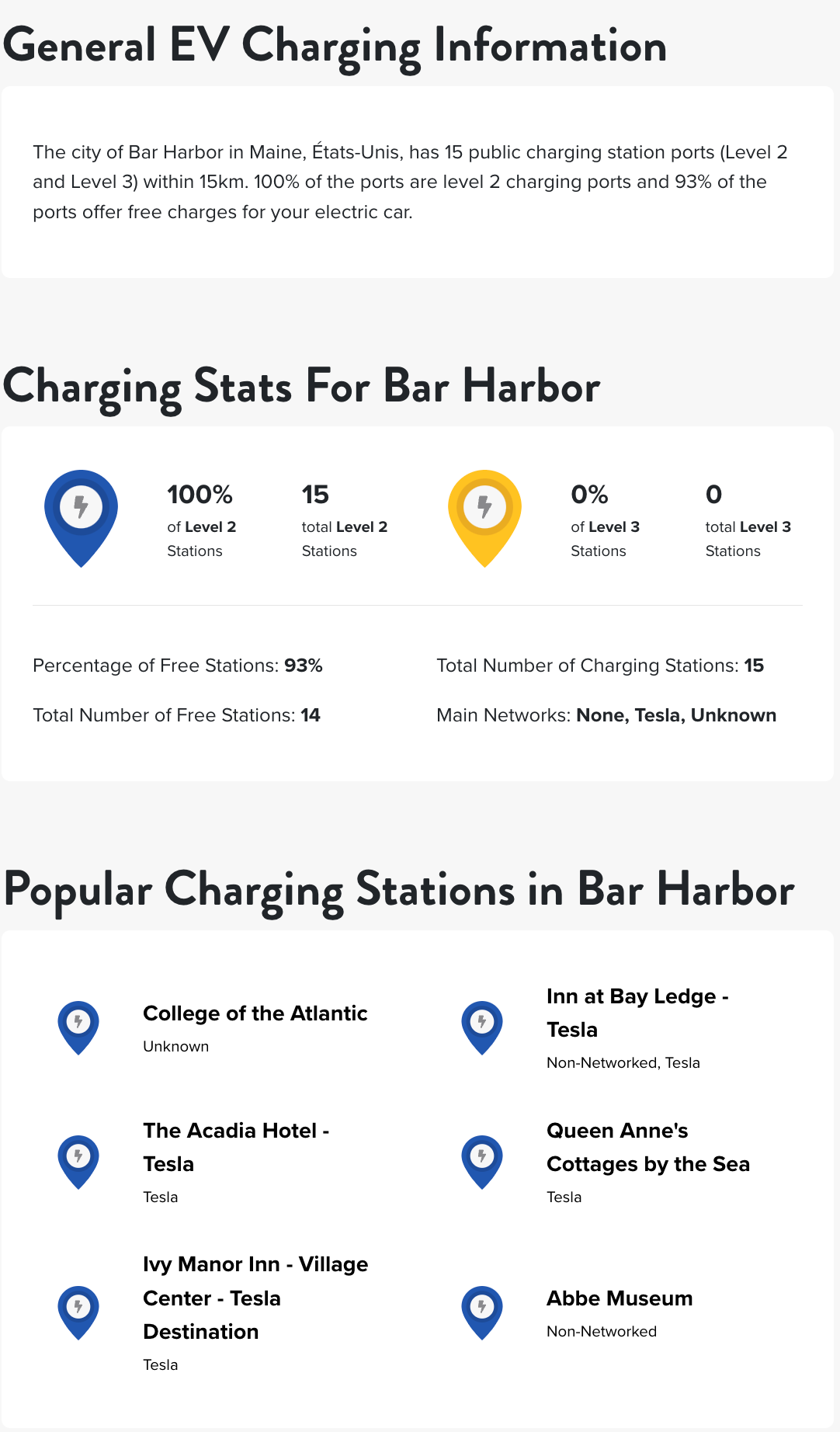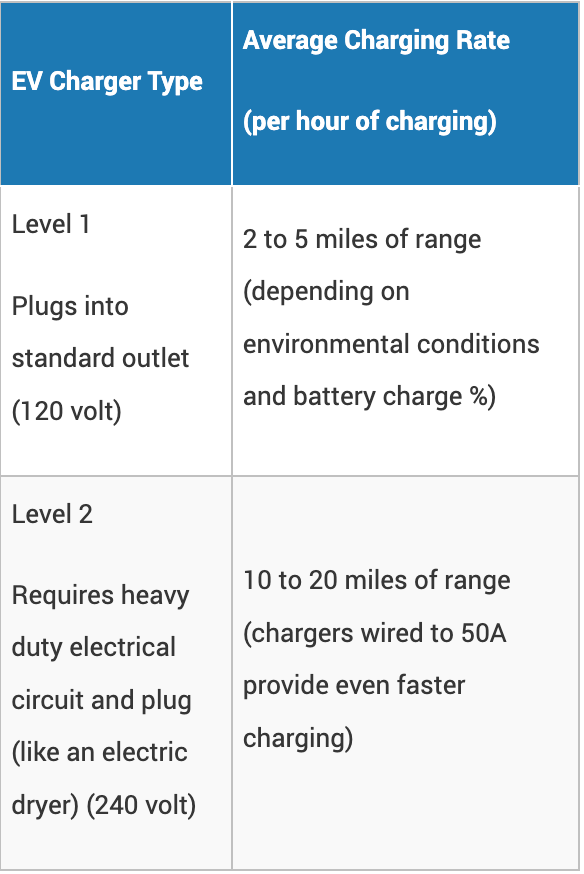BAR HARBOR—On a dreary Monday afternoon, the Bar Harbor Task Force on Climate Change gathered on the third floor of the Municipal Building to discuss potential locations for electric vehicle chargers, the town’s budget and Sustainability Coordinator Laura Berry gave several updates about her far-ranging work to make the town more sustainable.
EV CHARGERS
In May, Bar Harbor, Mount Desert and Tremont received an approximately $91,700 grant to install electric vehicle (EV) chargers across three towns, Berry said. The grant money is also meant to be used to promote public engagement about local initiatives for climate change. The towns decided that approximately $66,000 of the grant would be used on EV chargers. The remainder of the money is marked for a climate ambassadors program, climate plan outreach, decarbonization efforts, and EV outreach.
According to Energy Star,
“If all EV chargers sold in the U.S. met ENERGY STAR requirements, the savings in energy costs would grow to more than $17 million and 280 million pounds of greenhouse gas emissions would be avoided.
“The number of plug-in electric vehicles on the road in the United States is increasing. Fully electric cars produce no tailpipe emissions. While charging the battery may increase pollution at the power plant, total greenhouse gas emissions associated with driving them are still typically less than those for gasoline cars – particularly if the electricity is generated from renewable energy sources. For every mile driven, the average cost to drive an electric car is typically less than half what it costs to drive a standard gasoline vehicle.”
One of the first steps in using that grant money is locating places for the chargers that are publicly accessible and helpful. Earlier in the year, the task force expressed that they wanted those chargers to be particularly accessible to year-round residents and residents who might be renting and don’t have the ability (financial or legal) to have chargers at their residences.
“There are definitely places where we could have at least three charger installations,” Berry said. “The two that would serve the year round residents the most would be the one at the ball field and the one at the YMCA.”
The local YMCA leases town land and Berry said the nonprofit’s administration is open to there being a charger on its property.
The fields directly across Park Street from the YMCA is town-owned and has a parking lot where a charger could be put on the pole. If situated there, Berry believes, the charger would be in the middle of the ballfield parking lot.
A third option would be by the Public Safety Building’s exterior lot, between the police and fire stations and Fiori.
“There’s one specific location where it would be possible to mount an EV charger,” Berry said.
To reduce costs, she said that it would make sense for the grant-receiving towns to put out a joint request for proposals (RFP) for a potential EV charger installer. She knows that Tremont is currently searching for locations and has asked for help from A Climate To Thrive.
“Do we as the towns together want to buy the equipment before we put out an RFP,” is one of the questions that has to be discussed she said. The size of the chargers depends on the capacity of the locations. Berry said that these will not be the only chargers the town will install, but are the beginnings of the effort. For this beginning effort, she is thinking about town-owned land and parking and is also exploring a Town Hill option.
“The grant does not restrict us to just town-owned parking,” she said.
Task force members discussed whether residents would be more likely to use EV chargers at the end of town or intown. And if residents are less likely to use intown chargers during the summer months. Some members wondered if people have anything to do while waiting for the vehicles to charge if the cars were on the outskirts of town?
There are currently chargers next to the bathrooms near Agamont Park, at the College of the Atlantic and the Abbe. Berry said that there are some chargers accessible to the public at no charge to the public.
The fastest kind of DC charging requires infrastructure upgrades that are pretty significant, she said. The town is not looking to do that at this time. The State of Maine has recently received funding for an EV charging corridor. Hannaford in Ellsworth will have a faster-charging station. Those stations cost between $40-50,000 each, she said.
Part of the recently passed bipartisan $1.2 trillion Infrastructure Investment and Jobs Act creates a national EV charging network, calling for $7.5 billion in federal funds be used to put those charging stations all around the country in the hopes of creating a national charging network and get people to buy electric vehicles rather than vehicles using fossil fuels. It also has a component that encourages the transition of public transportation to electric.
At an earlier meeting, it was mentioned that the town hopes to transition its vehicles, including the police force’s.
Short-range cars and hybrid plug-in cars can be charged via plugs on standard 120-volt wall outlets for about 2-5 driving hours. Those are level I EV chargers. Fully electric cars and cars that are driven more than 40 miles usually need a 240-volt charger (level 2 charger).
TO CHARGE OR NOT TO CHARGE? NOT MUCH OF A QUESTION
The task force also discussed if they should offer the use of chargers for free or create a payment system for its use. One member said that the Jackson Lab’s cost for managing chargers was more than the electricity charged.
The key question at the meeting was whether it is a financial disincentive to charge for usage of EV stations and is that counter to Bar Harbor’s goal of encouraging the use of electric vehicles?
Berry said because of the town’s use of solar arrays, to fully financially benefit, the town can use more electricity than it currently uses, and the excess solar could be used to charge vehicles at no cost. She gave off-the-cuff figures of the town’s current use being approximately 2 million kilowatt hours, and if everything the town had was electrified (cars, buildings) it would jump to about 3 million kwh. The goal, she said, is to electrify the town in the next 5-8 years.
A recent MSN article says that “a boom in electric cars and trucks will require big upgrades to charging infrastructure” and “that by 2035 some stations will need to provide as much power as a small town.” The study MSN site is for passenger plazas and installations that serve cars and trucks, but it tells the tell of nationwide and local infrastructure updates that need to occur if the nation decides to go electric when its citizens hit the road.
OTHER DISCUSSIONS
Competitive Energy Resources is actively looking for fixed price electricity agreements for the town and has accessed the town’s information from electrical supplier Versant. The company is also making sure that the town’s solar arrays are generating credits in the best economically feasible way.
The town website is also being redone. Berry has had conversations about what pages should exist about sustainability in the context of the town’s website. Task force members created a wish list that included:
Citizens resources
Monthly blog post from the Sustainability Coordinator’s desk
Funnel for the task force to hear from the community that isn’t social media
Explanation of how the town gets grants
Testimonials and explanation of how to get from point a to point b as a citizen in the town when trying to be more energy efficient
Share work/projects with other towns too
A broad sustainability page
Task force page
BUDGET
Berry also explained the budget process to members. The budget works via line items. There is currently no sustainability or task force section with line items the way there is for the public department or public works. She met with Town Manager Kevin Sutherland who recommended that Berry and task force members think of “buckets of priorities” and then think of how much money is needed for projects in the upcoming year (and future) for those priorities, find the clear costs and then split those costs in different appropriate line items within the budget.
Though the task force is project based, the town’s general budget is not except for the capital improvements project (CIP) section.
“Being specific about project priorities is the most important part,” Berry said. It’s her and the town manager’s job to figure out what it would take to get those priorities set out by her and the task force.
Town manager develops a draft. He gives that draft to town council. The Warrant Committee also vets the budget. Voters eventually approve or disapprove it at the town meeting.
Editor’s Note: We had a bit of a family medical event (all is going to be okay), so I had to leave the meeting before the budget discussion had ended. Minutes for the meeting should eventually be up on the town’s website once the task force has approved them. Apologies.
Update: After a reader’s note, I also updated the article to change the wording from “Berry said that there are some chargers accessible to the public for free” to “Berry said that there are some chargers accessible to the public at no charge to the public.” Apologies again. The diagnosis has me off a bit, but no excuses! I have also added a poll.
PLACES TO LEARN MORE
Stats and Locations for Chargers
CNET story about infrastructure bill
Our earlier story about the task force and electric cars.










I read with interest BHTM Sutherland's suggestions for line item budgeting. "Town Manager Kevin Sutherland who recommended that Barry and task force members think of “buckets of priorities” and then think of how much money is needed for projects in the upcoming year (and future) for those priorities, find the clear costs and then split those costs in different appropriate line items within the budget."
For months I have inquired of Town officials how Public Works allocates its resources and particularly of members of the Town Council. I have never received any answers. This Summer Sutherland diverted Public Works/Highway Division resources to a campaign of threats, lies, and erasure in his effort to suppress a legitimate public outreach project which NE Harbor resident Leonard Leo objected to. Sutherland had no jurisdiction over this project. I would like to know: which 'bucket' of BH town priorities Sutherland dipped into to fund his campaign; how much time and money Sutherland diverted; which legitimate projects paid for it by having their resources depleted; and how the expenditures were itemized in official records.